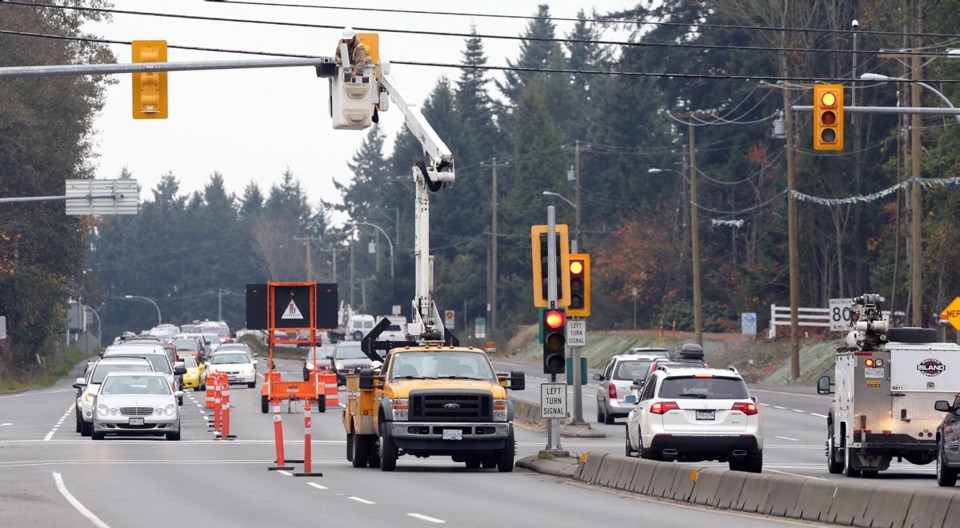A $3-million upgrade has improved safety at the notorious Sayward Road/Pat Bay Highway intersection, but it won’t stop drivers from making bad decisions, one area worker says.
“It’s wonderful what they’ve done and I think it will help a little bit, but stupidity does not change,” said Laurie Rowlett, who works at the corner’s Cunningham Enterprises/FasGas service station. “I think a lot of the accidents are caused by stupidity.”
Still, the new signage and lights in particular are a definite step up, she said.
The high-volume corner has had the dubious distinction of being the No. 1 site for motor-vehicle crashes in Saanich for a number of years, according to Insurance Corporation of B.C. figures. Sayward/Pat Bay had 328 incidents from 2008-12, including 169 rear-end collisions from 2006-10.
Police are happy that the road improvements, which started in the spring, are done, said Saanich Police Sgt. Steve Eassie.
“It’s definitely been an area that has been a concern for a number of years,” Eassie said.
“The stats don’t lie. It’s not uncommon for us to get accident reports first thing in the morning for traffic coming in, as well as reports of accidents on the way out.”
Another Saanich intersection — McKenzie Avenue and the Trans-Canada Highway — is also a problem, Eassie said. It was just behind Sayward/Pat Bay for 2008-12 crashes with 325, while the pair tied with approximate crash counts of 70 in 2012 — the highest totals on Vancouver Island. There are no immediate plans for changes to the McKenzie-Trans-Canada intersection.
Key elements of the Sayward/Pat Bay improvement project are northbound acceleration and deceleration lanes to make it easier to get onto the highway, a transit “queue-jump’ lane that allows buses to bypass backed-up traffic and congestion-warning lights to let drivers know what is happening ahead.
Saanich Mayor Frank Leonard said the changes are what the community asked for. He said his initial discussions with then-transportation minister Shirley Bond focused on the Cordova Bay Association residents’ group and nearby homeowners being primarily concerned with safety, but not wanting an interchange.
Interchange designs that had been produced in the past went too close to nearby Elk Lake or involved too much expropriation of land for residents’ tastes, Leonard said. Provincial money for an interchange wasn’t available in any case, he said.
Cordova Bay Association president Anthony Minniti said the group worked with Saanich, the provincial government and Saanich South NDP MLA Lana Popham.
“For our community in Cordova Bay it’s sort of an entry point and exit point for the community,” he said.
The association had long advocated for improvements, he said, calling for changes that were fairly quick and economical “and not too intrusive.”
The congestion lights have been in place for some time and have already had a calming effect on traffic, said Renée Mounteney, Vancouver Island district manager for the Ministry of Transportation.
She said the acceleration and deceleration lanes were put in with an eye to cutting the number of rear-end collisions caused by varying speeds of traffic as vehicles leave or access the highway.
Mounteney said the acceleration lane, for example, eases the transition to higher speed.
“If you’re coming off of Sayward and heading north toward Sidney or the ferries or the airport, you can get yourself to highway speed, merge into the traffic and nobody behind you is having to put the brakes on to slow down.”



